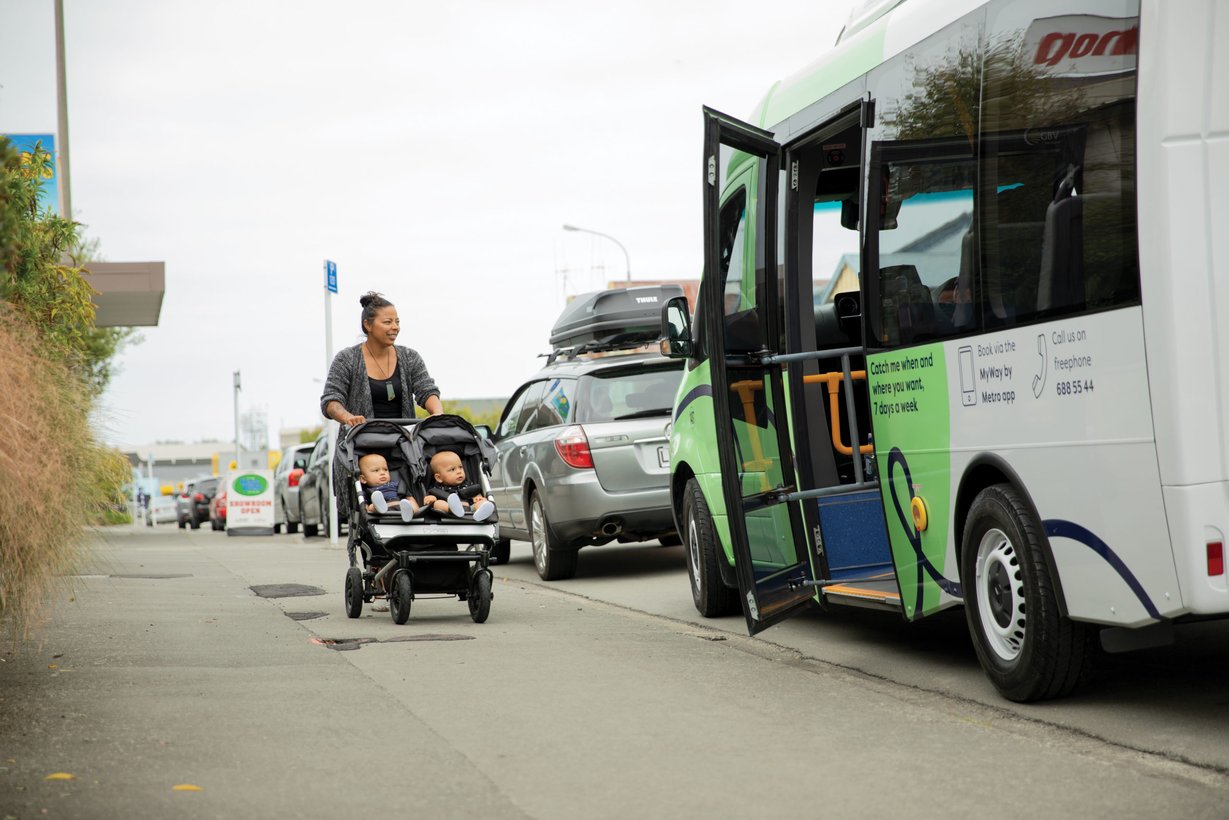Before the COVID-19 pandemic, public transportation in Timaru looked like much of the rest of the world: a fixed-route bus service took residents where they needed to go. Given growing concerns over the spread of the coronavirus, the community decided to “switch-off” their fixed route services to follow social distancing and public health recommendations.
And yet, Timaru still needed to be able to provide essential service workers and those needing access to essential services with some form of public transport. It was a vital and time-sensitive conundrum the city’s new MyWay service could accommodate.
MyWay is Timaru’s new on-demand public transportation network — often called microtransit or demand responsive transport. The service operates without routes and schedules, shuttling riders in shared vehicles they can hail using a mobile app. Although the city planned to launch the service to the public in April, city leaders saw an opportunity to rush MyWay into operation nearly a month early in order to respond to COVID-19.
“A key component of this decision was the flexible nature of MyWay by Metro and its ability to service the whole community and key essential services destinations, which the fixed route service could not do,” says Stewart Gibbon, the Senior Manager Public Transport for the Canterbury Regional Council. Gibbon has responsibility for public transit services in the Canterbury region of New Zealand.

A rapid launch in the face of a crisis
According to Gibbon, the decision to accelerate the launch of the service happened swiftly. Just four weeks into an originally planned eight-week closed customer trial, Gibbon – worked with his team to rethink what transit looked like in the face of COVID-19.
“Within an hour of the public transport team discussing options for Timaru, it was clear that MyWay by Metro was the best-suited response. The support of both Via and our operator, Ritchies Transport Ltd, made this an easy decision,” Gibbon said.
The pilot program had 150 enrolled trial riders, but when MyWay by Metro launched to the Timaru community as the response to COVID-19, they jumped to 450 new registered users within the first few days. The service is available for essential trips only. This includes essential service workers – from medical staff to supermarket workers – as well as people accessing medical services and doing supermarket shopping.
Passengers travel at no cost during the lockdown, and they are kept safe through physical distancing measures that allow for every second row of the vehicle to be used. “It’s been excellent to see how staff have been able to use MyWay to respond innovatively in a crisis,” adds Environment Canterbury’s South Canterbury Councillor, Peter Scott.
“The on-demand service performs well in this situation because it offers more flexibility, and reaches all of Timaru. This is helping people from across our community access the essential services they need, rather than the limited destinations served by the fixed-route service.” Like other cities across the world, Timaru has had to rapidly think about all the ways it can support its community in order to stop the spread of the coronavirus.
Adaptability is critically important as the world tries to combat the deadly spread of the disease. Gibbon and the local team have been grateful for the flexibility that the new MyWay service has been able to afford them, allowing their community to make necessary changes to their service delivery model.

A crisis that created a catalyst for change
Local authorities and leaders hold the keys to helping their communities in times of hardship. In the case of Timaru, that meant creatively thinking about the resources they had to make essential transportation one less thing the local community needed to worry about.
As Gibbon explains, it’s critical that authorities be innovative and nimble in their response to solve the issues facing their communities. “In this situation, having partners you can trust and rely on and solutions that are flexible enables you to respond to uncertainty with confidence,” Gibbon said. “The flexibility of the Via technology and the Via team has allowed us to deliver a far better community outcome than we could otherwise have done.” Gibbon says he and his community are feeling hopeful, and that “sometimes a crisis creates the catalyst for change in a community.”




